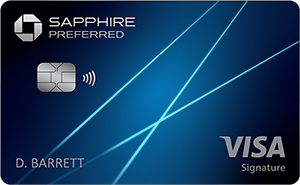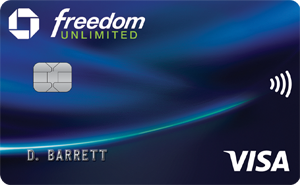If you're considering a credit card for the first time or simply looking over the terms of your card and trying to better grasp what's going on with your money, understanding finance charges should be priority one. Since the finance charge is one of the fees you pay for the privilege of using a credit card, it's pretty important information. Let's walk through how finance charges work.
What is a finance charge?
A finance charge is any charge associated with borrowing money and paying it back over time. This includes accrued interest as well as additional fees related to borrowing, such as transaction fees. If you're wondering about the difference between a finance charge vs. interest, although they're similar in theory, a finance charge can include late fees or other charges as well as the interest fees.
With credit cards, your finance charge is the interest that has accrued on the money you owe during that particular billing cycle, plus any penalties, annual fees, transactions fees, and other fees. Most credit card issuers calculate interest charges by applying the annual percentage rate (APR) to your average daily balance.
How your credit card finance charge is calculated
Your credit card finance charge depends on a few factors -- specifically, your annual percentage rate, or APR, the amount of your debt, and the amount of time in the billing cycle.
There are a few possible ways credit card issuers can compute the interest portion of your finance charge, but most work it out on a daily basis using the "average daily balance" method.
- First, your APR is divided by 365 (or 360 in certain cases) to determine your daily rate. For example, a credit card APR of 17.99% would translate to a 0.049% daily interest rate.
- Next, you'll figure out your average daily balance by looking at each day in your billing period (this range is listed on your statement). Take the balance of each day in your billing cycle, add them together, and divide by the number of days in that billing cycle. So, for example, if you have a $100 balance, but you charged $50 halfway through a 30-day billing cycle, you'd add up 15 $100 days and 15 $150 days to get $3,750. Dividing that by 30 gives you an average daily balance of $125 for that cycle.
- Last, take your average daily balance, $125, and multiply it by 0.049%, your daily interest charge, and then by 30, the number of days in your billing period to figure your interest charge. That looks like: $125 x 0.049% x 30, which equals $1.84.
It's important to note that the interest may be slightly different than this, depending on how frequently your credit card company compounds the interest. Some compound monthly, as is illustrated above, while others compound daily, which can make the math more complicated and the interest charge slightly higher.
It's also worth mentioning that many of the best credit cards have promotional interest rates (more on that in the next section), as well as different APRs that apply to cash advances. Also, most credit card interest rates are variable, meaning they can change over time along with a certain benchmark, such as the U.S. prime rate.
It's important to carefully compare credit cards before choosing to apply. That way, you'll know you have the best rate and terms possible, as well as bonuses or incentives that you will actually use.
Credit card comparison
We recommend comparing options to ensure the card you're selecting is the best fit for you. To make your search easier, here's a short list of standout credit cards.
| Offer | Our Rating | Welcome Offer | Rewards Program | APR | Learn More |
|---|---|---|---|---|---|
|
Rating image, 5.00 out of 5 stars.
5.00/5
Our ratings are based on a 5 star scale.
5 stars equals Best.
4 stars equals Excellent.
3 stars equals Good.
2 stars equals Fair.
1 star equals Poor.
We want your money to work harder for you. Which is why our ratings are biased toward offers that deliver versatility while cutting out-of-pocket costs.
|
Discover will match all the cash back you’ve earned at the end of your first year. N/A | 1% - 5% Cashback Earn 5% cash back on everyday purchases at different places you shop each quarter like grocery stores, restaurants, gas stations, and more, up to the quarterly maximum when you activate. Plus, earn unlimited 1% cash back on all other purchases—automatically. |
Intro: Purchases: 0%, 15 months Balance Transfers: 0%, 15 months Regular: 17.24% - 28.24% Variable APR |
||
|
Rating image, 5.00 out of 5 stars.
5.00/5
Our ratings are based on a 5 star scale.
5 stars equals Best.
4 stars equals Excellent.
3 stars equals Good.
2 stars equals Fair.
1 star equals Poor.
We want your money to work harder for you. Which is why our ratings are biased toward offers that deliver versatility while cutting out-of-pocket costs.
|
Up to $300 cash back Earn an extra 1.5% on everything you buy (on up to $20,000 spent in the first year) — worth up to $300 cash back. That's 6.5% on travel purchased through Chase Travel, 4.5% on dining and drugstores, and 3% on all other purchases. | 1.5% - 5% cash back Enjoy 5% cash back on travel purchased through Chase Travel, our premier rewards program that lets you redeem rewards for cash back, travel, gift cards and more; 3% cash back on drugstore purchases and dining at restaurants, including takeout and eligible delivery service, and 1.5% on all other purchases |
Intro: 0% Intro APR on Purchases and Balance Transfers for 15 months Purchases: 0% Intro APR on Purchases, 15 months Balance Transfers: 0% Intro APR on Balance Transfers, 15 months Regular: 20.49% - 29.24% Variable |
Apply Now for Chase Freedom Unlimited®
On Chase's Secure Website. |
|

Apply Now for Chase Sapphire Preferred® Card
On Chase's Secure Website. |
Rating image, 4.50 out of 5 stars.
4.50/5
Our ratings are based on a 5 star scale.
5 stars equals Best.
4 stars equals Excellent.
3 stars equals Good.
2 stars equals Fair.
1 star equals Poor.
We want your money to work harder for you. Which is why our ratings are biased toward offers that deliver versatility while cutting out-of-pocket costs.
|
60,000 bonus points Earn 60,000 bonus points after you spend $4,000 on purchases in the first 3 months from account opening. That's $750 when you redeem through Chase Travel℠. | 5x on travel purchased through Chase Travel℠, 3x on dining and 2x on all other travel purchases Enjoy benefits such as 5x on travel purchased through Chase Travel℠, 3x on dining, select streaming services and online groceries, 2x on all other travel purchases, 1x on all other purchases, $50 Annual Chase Travel Hotel Credit, plus more. |
Intro: N/A Purchases: N/A Balance Transfers: N/A Regular: 21.49%-28.49% Variable |
Apply Now for Chase Sapphire Preferred® Card
On Chase's Secure Website. |
How to avoid paying finance charges on your credit cards
Other than the obvious route of not charging anything on your credit cards, there are a couple of ways to actually use your credit cards and avoid paying interest charges. Many cards will still require annual fees, regardless of whether you carry a balance, and transaction fees always apply.
First, if you pay your credit card balance in full every month, you won't have to pay any interest charges. You'll need to pay before your credit card's grace period runs out. Most credit cards' grace periods are between 21 and 25 days, and you should be able to easily locate yours on your billing statement.
Alternatively, if you need to carry a credit card balance, there are many cards that offer 0% intro APRs for certain amounts of time. Many offers extend for 12 months or longer, and as of this writing, there are 0% intro APR offers for as long as 18 months. With competition in the credit card industry at an all-time high, these offers are evolving quite rapidly, so be sure to check out the latest and best 0% intro APR offers. If you have an existing credit card debt that you'd like to avoid finance charges on, look at the 0% intro APR offers specifically geared toward balance transfers.
During the card's promotional period, you won't be assessed any interest charges on qualifying purchases (generally, cash advances don't qualify), even if you carry a balance. Once the promotional 0% intro APR period ends, the balance will start to accrue interest at your standard APR.
Credit card finance charges can be rather high, with the average APR in the neighborhood of 21% as of Sept. 15, 2023. So, if you can avoid interest charges through one of the two methods discussed here, it could certainly be a smart move..
Still have questions?
Here are some other questions we've answered:
FAQs
-
There is not currently a federal law that limits credit card interest rates for most borrowers, but some states do have various caps. However, military service members can't be charged more than 36% under the Military Lending Act.
-
Most 0% APR cards go to the best-qualified borrowers. That being said, right now, you should be able to get a 0% introductory rate with a FICO Score® of at least 670 or a Vantage Score of 661.
Our Credit Cards Experts
We're firm believers in the Golden Rule, which is why editorial opinions are ours alone and have not been previously reviewed, approved, or endorsed by included advertisers. The Ascent does not cover all offers on the market. Editorial content from The Ascent is separate from The Motley Fool editorial content and is created by a different analyst team.

